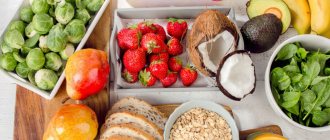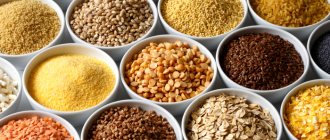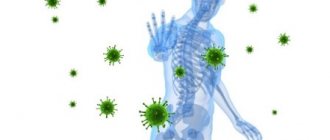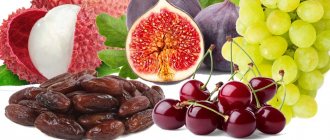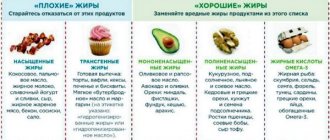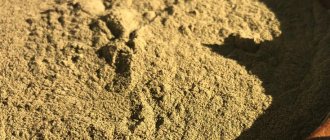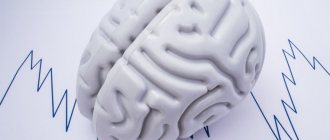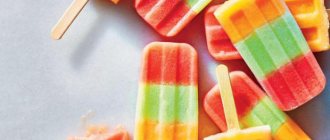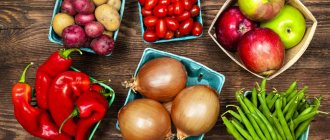A short excursion into why fats are so important
- Back in the 90s, the world press actively popularized the opinion that fats are bad. They were rejected, and products with a “low-fat” sign on the packaging were bought up in unlimited quantities. But the absence of fat in food is by no means a panacea for excess weight. And only quite recently the masses began to perceive fats as a healthy nutritional element: along with proteins, carbohydrates, vitamins, minerals...
- promote the production of hormones;
- provide cells with the necessary energy support;
- regulate heat exchange, which is especially important during cold weather;
- form cell membranes.
Lipids have a number of useful functions:
The body will not function normally without fats. However, not all of them are equally useful. Some you really have to give up in order to effectively lose weight.
Harm and benefit
In a simplified sense, fat is the main source of energy for the body (80% of human energy reserves). Vegetable oil contains various acids, phytosterols, and phospholipids, which are absolutely important for normal metabolism. Nutritionists strongly recommend completely abandoning solid and animal fats, because vegetable oil has more beneficial properties:
- polyunsaturated acids omega-6 and omega-3 are not produced by the human body, but are vital for health (prevent blood clots and increased blood pressure);
- vegetable oil stimulates tissue regeneration;
- natural first cold-pressed oils - suppliers of large amounts of vitamin E, which has a positive effect on the condition of the skin;
- vegetable fats are minimally involved in the formation of bad cholesterol, which provokes atherosclerosis;
- metabolic processes are accelerated;
- blood composition normalizes;
- proper nutrition, balancing the vegetable and meat components in the diet, promotes weight loss;
- the immune system is strengthened;
- a strong cell membrane is formed;
- heart function is normalized;
- the strength and elasticity of blood vessels increases;
- retinol and similar substances protect the body from radiation exposure, reduce the risk of cancer, diabetes, and activate protein synthesis.
It is impossible to unambiguously determine the harmfulness of fats, since the negative effect directly depends on the amount consumed and the method of processing the oil. Such a product can also be harmful if you use it exclusively, completely abandoning animal lard. A cheap product of plant origin, with fanatical adherence to diets, provokes serious consequences:
- an excess of vegetable fats without a balance with animals can cause infertility in women;
- after severe heat treatment, oxidized polyunsaturated fats provoke thinning of the artery walls;
- oxidized fats are not absorbed by the body, but settle on the walls of blood vessels, which in the future provokes heart pathologies, cancer, obesity, and diseases of the gastrointestinal tract.
- DIY shell paintings with photos. How to make a picture from sea shells - master class for beginners
- Pumpkin pies: baking recipes
- 7 pleasant surprises for your beloved husband
Unsaturated fats
When talking about the benefits of lipids for the heart and blood vessels, it is important to take into account that we are talking about unsaturated fats. They play an important role in losing weight, preserving a person’s beauty, energy, and health.
Unsaturated are a type of lipids that are necessary for the construction of new cells in the body. In addition, they are responsible for metabolism. Up to 20% of unsaturated fats are used to ensure the functioning of human organs and systems.
Unsaturated fats are either monounsaturated or polyunsaturated. They are valued for a number of beneficial effects on the body. But where can you find these healthy fats? Monounsaturated - present in olive oil, avocado, nuts. Polyunsaturated – flax seeds, some types of fish.
Many nutritionists recommend replacing trans fats and saturated fats with unsaturated lipids. This will significantly improve the functioning of literally all human organs and systems.
Vegetable fats: composition and nutritional value
The importance of oils as a component of human nutrition is as follows:
- They dissolve vitamins D, A, E. Without combining with lipid, vitamins cannot participate in the body's metabolic processes.
- Fats are associated with substances valuable for health - phospholipids and tocopherol compounds. They have a beneficial effect on the myelin sheaths of brain neurons, blood vessels, vision, and skin condition. Lipid deficiency leads to deterioration in the functioning of these systems and organs.
- Unsaturated acids contained in oils and raw materials for their production help reduce the content of low-density lipoproteins in the body, a type of cholesterol that can accumulate on the walls of blood vessels, causing atherosclerosis.
- Getting enough lipids from food is important for the female reproductive system.
A person who is not overweight can receive about 80 grams of fat per day from food. Half of them are plant lipids.
Be sure to read: Foods rich in fiber: list of what dietary fiber is needed for, daily value
It is recommended to add oils or seeds to salad or cooked porridge. When they are subjected to heat treatment (including frying in oil), the properties needed by the body are reduced due to oxidation.
Saturated fats
They are simple in structure, so they combine with each other in the blood, forming fatty compounds. Which, in fact, has the most detrimental effect on human health, causing his body weight to increase. In addition, they clog arteries, which can cause heart attack, stroke and other cardiovascular diseases. Saturated fats slow down all metabolic processes, which is why the process of burning calories slows down. Polyunsaturated fats are the main source of bad cholesterol.
At the same time, it is also not recommended to completely abandon such lipids, since they contain certain vitamins. Stearic acid in saturated fats can be converted into oleic acid, which is a monounsaturated acid.
Nutritionists recommend eliminating fatty pork and processed meats, such as frankfurters and sausages - the most popular sources of saturated fats - from your diet.
How much fat does a person need?
To meet the body's needs for fats, their amount should be about 30% of the total calorie intake.
On average, for an adult male it is about 100 g. For girls it is about 50-70 g.
Older people need less fat - about 70-80 g.
The ratio of different types of fats is important.
I promised to tell you about the correct proportion of fats in the diet, I keep my promise)
It is recommended to consume 70% vegetable fats and 30% animal fats.
In more detail, the types of lipids should be distributed as follows:
- saturated fats – 10%;
- Omega 9 monounsaturated fatty acids – about 50%;
- Omega 6 polyunsaturated acids – 30%;
- polyunsaturated acids Omega 3 – 10%.
The need for fats is individual and depends on age, physical activity, and the presence of chronic diseases.
Also, their amount depends on the total caloric intake of the diet and the consumption of carbohydrates. When entering the body, fats are broken down in the intestines and enter the tissues through the blood. There they are used to build cell membranes and as an energy source.
If a lot of glucose is consumed (and as we know, any carbohydrates that enter your body are eventually broken down into glucose), insulin is intensively synthesized.
Under the influence of this hormone, lipids are deposited in adipose tissue.
They are released and broken down under the influence of somatotropic hormone (“growth hormone”), adrenaline, and also during intense physical activity.
During fasting, fats become the main source of energy and are converted into carbohydrates.
If you consume more fat than necessary, the volume of fat deposits increases.
In general, it’s not just about fats, it’s about the total daily caloric content of the diet!
If you consume more calories per day than you expend, it does not matter whether you consume them from carbohydrates, proteins or fats. You will still gain excess fat mass.
Because of this, the condition of blood vessels and skin worsens, an increased load on the liver is created, and blood pressure rises. Excess weight has never made anyone prettier.
It is recommended to consume less fatty foods than normal for overweight people who lead an inactive lifestyle.
But sometimes the amount of fat can be increased. The need for them increases in the following cases:
- with atherosclerosis, decreased elasticity of blood vessels;
- when playing sports;
- increased physical activity;
- for diabetes mellitus;
- hormonal imbalances;
- in adolescence;
- during pregnancy and lactation;
- in the cold season.
Trans fats
They are found in many products: from baked goods to drinks. According to their origin, they can be natural or artificial. The first type is fermented by some animals and can therefore be found in animal products. Artificial trans fats are formed through hydrogenation, which turns liquid oils into a solid mass. Such a product can be a cheap analogue of good butter.
Scientists from various fields of knowledge agree that trans fats are very dangerous to health. Their consumption can lead to the development of heart and vascular diseases, cause obesity and even cancer. Always pay attention to the composition of what you buy at the grocery store: if hydrogenated oils are present somewhere, it means that consuming such food is highly not recommended.
You can reduce your trans fat intake to a minimum by avoiding all packaged foods with a long shelf life. Minimize margarine consumption when preparing food. Avoid fried foods in cafes and restaurants, as they may be cooked in poor quality oil.
Is it possible to eat foods high in fat?
The listed products are sources of high concentrations of lipids, so they must be consumed in doses. People who are not overweight should include them in their diet in such quantities that, when converted to pure fat, there is no more than 40 grams per day.
Be sure to read: Fast carbohydrates: list of products, table, what they are needed for, which ones are suitable for weight loss
For overweight people, cut this amount in half. Of animal fats, fish rich in essential acids is preferable. If a person does not have signs of atherosclerosis and hypertension, he can also consume butter, fatty cheeses, and lard in limited quantities.
TOP 7 sources of healthy fats
Knowing which fats are healthy and which are not will help you plan your diet wisely. Only in this case the process of losing weight will not harm the body.
Some foods can help you burn fat and speed up your metabolism. List of foods with healthy fats:
Coconut oil
A popular product high in healthy fats. Lauric acid, which is found in coconut oil, has an antifungal and antibacterial effect. Due to its high content of antioxidants, it has an anti-inflammatory effect.
For heart problems, consumption of this oil is also recommended. It helps lower cholesterol levels.
You can introduce this type of oil into your diet by adding it to yogurt, porridge or smoothies. In addition, you can cook any pastries on it. In general, an excellent alternative to any other oil.
Nuts
The largest amount of beneficial lipids is found in almonds, walnuts, and pecans. Their content may vary depending on the type, but these are the varieties that are most beneficial for the functioning of the heart.
Plant sources of omega-3 help minimize the risk of developing heart and vascular diseases. They also have a positive effect on mental health. Omega-6 acids have an anti-inflammatory effect.
Despite the high content of vitamins and antioxidants, nuts should be consumed in small quantities. This is due to the fact that they are very high in calories. Recommended consumption is up to 30 grams per day.
Preference should be given to unsalted types. This will significantly reduce your intake of low-beneficial sodium.
Any nuts can be used to improve the taste of some salads or added to porridge for breakfast.
Olive oil
Olive oil contains monounsaturated acids, vitamins, and antioxidants. Many studies confirm its positive effect on the heart. In addition, it relieves inflammation and minimizes oxidative processes.
It is worth considering that it is not recommended to heat olive oil, so it is better to use it when preparing cold appetizers. Heat treatment damages fatty acids by damaging their molecules.
According to the fat table, there are 99 grams of lipids per 100 grams of this product.
Chia seeds
Small chia seeds are a real treasure trove of nutrients. These grains contain more omega-3 acids than salmon! Rich in protein, fiber and microelements, they have a positive effect on the body.
This product should be taken with caution as it may cause allergic reactions. Failure to comply with consumption standards may disrupt the functioning of the gastrointestinal tract.
You can add seeds when baking bread and buns. They complement salads and appetizers well. Can be an additional seasoning for steamed vegetables. The seeds can be soaked in water for a couple of hours, and then eaten a couple of spoons before meals. They will partially fill the stomach with guaranteed beneficial substances, reducing the feeling of hunger.
Ratio of BJU chia seeds per 100 grams:
- proteins – 16 grams;
- fats - 31 grams;
- carbohydrates – 42 grams.
The total calorie content is 512 kilocalories.
Fish fat
Fish oil can be obtained by eating certain types of fish. For example, salmon or tuna. You can easily make up for the lack of beneficial components of fish oil using concentrated supplements that are sold in pharmacies. They are rich in omega-3, which has a number of benefits for the body.
You can add fish to your diet several times a week. This will reduce the load on the heart and increase healthy cholesterol levels. So. Vitamin A, which is present in fish oil, is responsible for the beauty and health of hair, skin, nails, teeth and bones.
Fish oil, as an additive to the basic diet of those who are consciously losing weight, significantly speeds up metabolism. When purchasing a product in capsules, it is recommended to pay attention to its color. It should be yellow: this will be evidence of the naturalness of its origin.
Avocado
This fruit contains a large range of healthy fatty acids. Avocado has antioxidant properties, protecting cells from premature aging, and has a positive effect on the functioning of the gastrointestinal tract.
Avocado BJU proportions: 2/20/6. The total calorie content per 100 grams of product is 210 kilocalories.
Flax-seed
These seeds are recognized by nutritionists as the best plant source of omega-3 acids. Alpha-linolenic acid is not produced by the body on its own, so consumption of these seeds is, by and large, necessary for everyone. In addition, they contain antioxidants, of which there are 85 times more than in any other product. Some doctors claim that flaxseeds help prevent cancer and diabetes.
The seeds must be ground before use. A whole seed will not be digested by the body. You can add them anywhere: to porridge, baked goods, yoghurts.
What is fat
Fats (lipids) are organic substances that are the most important sources of energy. Up to 95% of all lipids are simple neutral lipids (glycerides). Fats are esters formed as a result of the interaction of trihydric alcohol - glycerol and higher fatty carboxylic acids. Fats are necessary for every living organism to provide structural and energy functions. Fats are one of the most important structural components of the cell membrane. Without fat and membrane protection, any living cell will die because it will not be able to withstand the external environment and feed itself. Moreover, fat cells directly contain the most important element - energy. We extract fat from foods of animal or plant origin. Tissues can use fat for fuel (such as muscle) or to store it (adipose tissue). After eating, chylomicrons gradually increase in the blood, which begin to be captured by an enzyme attached to the wall of the capillaries associated with the cell - lipoprotein lipase (LPL). Chylomicrons are a complex of lipids with proteins that are synthesized in the body to transport lipids in the blood to tissues, and since lipids are water-insoluble substances, lipid-protein complexes called lipoproteins are used for their transport. Chylomicrons (CM) are formed in intestinal cells, their function is to transport exogenous fat from the intestine to tissues (mainly adipose tissue), as well as transport exogenous cholesterol from the intestine to the liver. Depending on the degree of tissue activity, lipoprotein lipase can be active in muscle tissue (during work or during the period of replenishment of reserves after work), and can also be active in adipose tissue (at low activity, most of the chylomicrons and free fatty acids are stored into the fat depot). LPL hydrates triglycerides in the chylomicron - producing a triglyceride-free particle - the remnant of the chylomicron. Cholesterol is also converted into chylomicron, but is not used or transferred to muscle tissue, but remains in the form of a chylomicron residue and is sent to the liver. During periods of hunger, adipose tissue begins to release fatty acids into the blood, where they are used as energy in muscle tissue and organ cells. Also, fatty acids are sent to the liver, where triglycerides are formed from them. Complete rejection of fats leads to a decrease in energy reserves. A person feels apathy, fatigue and often pain - this is why giving up fat is dangerous.
The concept of vegetable fat is not entirely correct. In science, it is customary to classify the group as “vegetable oils”.
Plant foods contain less fat than animal products, but this does not diminish their benefits for the human body. Some natural foods can contain up to 50% fat (in the form of oil), which is an enormously high level.
Varieties of component
Content:
- What is fat
- What are the benefits of fat?
- Is it possible to eat foods high in fat?
- How to regulate fat intake in the body
As a rule, fats are divided into neutral (triglycerides - 95% of total fat intake in the diet) and fat-like substances (phospholipids, sterols). Neutral fats consist of trihydric alcohol glycerol (CH)3H2-(OH)3) and fatty acids (R-COOH).
There are 3 types of fats: saturated, unsaturated and trans fats. Let's look at each of them in more detail.
The saturation of a fat is determined by the number of hydrogen atoms each fatty acid contains. In turn, fatty acids are divided into saturated and unsaturated (monounsaturated and polyunsaturated) acids. Saturated fats. Animal fats can contain saturated fatty acids with a chain length of up to twenty or more carbon atoms, they have a solid consistency and a high melting point. These animal fats include lamb, beef, pork and a number of others. High intake of saturated fatty acids is a major risk factor for diabetes, obesity, cardiovascular disease and other diseases. Contained in products of animal origin: cream, meat, cheese, milk. Based on saturation, fats are divided into solid and liquid. Solid fats (butter, lard and others - solid at 20ºС) contain saturated fats (animal, poultry fats) - the exception is fish oil, while liquid fats predominate unsaturated fatty acids (vegetable oils - liquid at 20ºС) - the exception is palm oil. Depending on the content of saturated fatty acids and their chain length, the melting point of fat, the rate of digestion, and digestibility change. Consumption of saturated fatty acids for adults and children should be no more than 10% of the daily calorie intake.
Monounsaturated fatty acids (MUFAs). Monounsaturated fatty acids include myristoleic and palmitoleic acids (fish and marine mammal fats), oleic acid (olive, safflower, sesame, rapeseed oils). Monounsaturated fatty acids, in addition to their intake from food, are synthesized in the body from saturated fatty acids and partly from carbohydrates. The physiological need for monounsaturated fatty acids for adults should be 10% of the daily calorie intake. Polyunsaturated fatty acids (PUFAs). Fatty acids with two or more double bonds between carbon atoms are called polyunsaturated fatty acids (PUFAs). Of particular importance for the human body are PUFAs such as linoleic and linolenic acids, which are structural elements of cell membranes and ensure the normal development and adaptation of the human body to unfavorable environmental factors. PUFAs are precursors of bioregulators formed from them - eicosanoids. The physiological need for PUFAs is 6-10% of the daily calorie intake for adults. Omega-6 (-6) and Omega-3 (-3) PU fats. The two main groups of PUFAs are acids of the -6 and -3 families. -6 fatty acids are found in almost all vegetable oils and nuts; -3 fatty acids are also found in a number of oils (flaxseed, cruciferous seed, soybean). The main dietary sources of -3 fatty acids are fatty fish and some seafood. Among PUFA-6, a special place is occupied by linoleic acid, which is the precursor of the most physiologically active acid of this family - arachidonic acid. Arachidonic acid is the predominant representative of PUFAs in the human body. The physiological need for adults is 5-8% of the daily calorie intake for -6 and 1-2% for -3. The optimal ratio in the daily diet of -6 to -3 fatty acids should be 5-10:1.
Unsaturated fats. This variety can be divided into two subgroups: poly- and monounsaturated fatty acids. Saturated fats are considered the healthiest: they fight internal inflammation, protect the heart and blood vessels, improve memory and vision, stabilize hormonal levels and have a beneficial effect on skin condition.
Trans fats. Hydrogenation converts unsaturated fatty acids (vegetable oils) into saturated ones, thereby making them more resistant to spoilage. This process converts the CIS position of the molecule to the TRANS position (more linear without bending). The concept of “trans” refers to fatty acids, not fats, and the expression “trans fats” appeared as a result of simplification. They have an extremely negative effect on the human body. A diet based on trans fats leads to an increase in the level of bad cholesterol, the formation of fatty deposits in the blood vessels and around the internal organs. Consumption of trans fats poses a danger not only to your figure, but also to a healthy life. Artificially synthesized trans fats are considered especially harmful. They are found in margarine and most prepared foods. Before heading to the checkout with your grocery basket, carefully re-read the ingredients and make a choice in favor of health rather than temporary gastronomic pleasures.
Fats are your friends
Lipid intake should be optimally calculated based on individual indicators. Formula for calculating BZHU:
- for women: 6.25*height in centimeters + 10*weight in kilograms - 5*age - 161;
- for men: 6.25*height in centimeters + 10*weight in kilograms - 5*age - 5.
It is these data that will be the most correct ratio of the proportions of macronutrients in food.
The basis of the diet should be the following products: lean meat, eggs, cottage cheese, grains, fish, beans, nuts, oils, avocados, honey, vegetables, fruits. It is better to replace simple carbohydrates with complex ones, so preference should be given to durum pasta.
The daily intake of lipids can be calculated as follows: per 1 kilogram of weight you need 1 gram of fat. During calculations, not only their excess, but also their deficiency may be revealed. How to fix a lack of lipids? This question worries many girls. The fix for this is very simple, you just need to increase the consumption of the products mentioned above. Vegans can replace meat and fish with nuts and seeds.
List of vegetable fats
Many people use only sunflower and olive oils, the rest are rarely used. But they are unfairly forgotten, but they contain many nutrients. The most useful are flaxseed and cedar oils, in which fatty acids are in an optimal ratio. But if not everyone can eat flaxseed because of its special smell and bitterness, then cedar is very tasty. In addition, other vegetable fats are consumed. The list of them is quite long:
- corn;
- soy;
- mustard;
- walnut oil;
- sesame;
- camelina;
- sea buckthorn;
- coconut;
- cacao butter;
- hemp;
- almond;
- pumpkin;
- apricot oil
Diet planning
The diet must be prepared taking into account daily calorie expenditure. In order to get rid of extra pounds, you need to burn more calories than you consume. For example, the daily diet was 2000 kilocalories - to lose weight, you should slightly change their amount downward: for example, to 1600 kilocalories.
When compiling a menu, it is necessary to take into account the ratio of BZHU. This will keep your diet varied.
As one of the possible options, consider the following:
In the morning, you can add slow carbohydrates and proteins to your diet. This could be: eggs, cheese, low-fat kefir, porridge, muesli. Egg whites help you get rid of extra pounds. Protein is absorbed quite quickly. Thanks to this, metabolism is normalized. Under the influence of chicken protein, excess weight disappears even faster. It is important to follow the rule: eggs must be boiled. The whites of just two eggs will provide the body with enough protein, which will help with the production of the hormone serotonin.
Between breakfast and lunch there can be one more meal - a small snack of 100-150 grams of low-fat cottage cheese with fruits, nuts or dried fruits.
Lunch is the most important meal of the day. It may consist of:
- 100-150 grams of boiled buckwheat, durum wheat pasta;
- chicken breast with vegetables;
- vegetable salad with chia seeds, dressed with olive oil.
The evening meal should be light, for example:
- 150-200 grams of rabbit, veal, turkey, fish. You can add legumes and other fruits and plants;
- any vegetable salad. A good option is cabbage, carrots with chia seeds and olive oil. These vegetables are rich in fiber, and the grains and oil will provide the necessary amount of healthy fats.
Before going to bed, you can drink a glass of kefir with a small percentage of fat content, unsweetened yogurt.
You can also consume herbal teas throughout the day, which have a number of positive effects:
- decreased appetite;
- laxative, diuretic effect. A good example is a decoction of Altai senna. It helps cleanse the intestines, relieve constipation, and help remove toxins;
- improvement of metabolism;
- normalization of the liver and other internal organs;
- weight loss.
Herbal infusions:
- Altai herbs - from nettle, pink moss, colza, resin, bracken. These herbs help break down fat due to their fat burning effect.
- Monastic - contains chamomile, mint, dandelion, linden. They help not only to lose extra pounds, but also reduce appetite.
It is best to take infusions before meals, after straining them.
Fats in food: table
To consume the required amount of fat, you need to know how much is contained in different foods.
I advise you to use natural foods, since semi-finished and ready-made foods are high in carbohydrates and processed saturated fats.
In this case, it is difficult to determine how many grams entered the body.
In order not to exceed the daily norm, you need to know which foods contain the most fat:
- saturated ones are found in fatty dairy products, meat, coconut oil;
- monounsaturated – in nuts, olive oil, mustard oil, avocado;
- polyunsaturated – in fatty fish, vegetable oils, eggs, sesame.
A table with foods containing the maximum amount of fatty acids will help you correctly create a diet:
| amount of fat per 100 g of product | products |
| 80-100 g | lard, butter, vegetable oils, margarine |
| 40-80 g | nuts, seeds |
| 20-40 g | sausages, cheese, sour cream, pork, duck meat, halva, chocolate |
| 10-20 g | cottage cheese, ice cream, cream, lamb, beef, chicken meat, turkey, eggs, fish |
There are foods that are low in fat. These are flour products, cereals, pasta, fruits, vegetables, lean meat.
With their help, it is difficult to reach the daily requirement of fatty acids, as there will be an excess of carbohydrates. But when choosing a diet, their composition also needs to be taken into account.
| amount of fat per 100 g | products |
| 3-9 g | medium-fat dairy products, lean meat, baked goods, sweets, pink salmon, tuna |
| 1-3 g | cereals, hake, cod, chicken breast, bread |
| less than 1 g | vegetables and fruits except avocados |
To study in detail the dietary fat and calorie content of all food products, you can use this table on my blog:
Bad fats
Saturated fatty acids of animal origin, it is recommended to consume no more than 10% of all fats in the diet per day.
List of foods with unhealthy fats:
- butter;
- cream, cheese (refractory fat), sour cream;
- margarine;
- chicken skin;
- salo;
- pork, lamb and other meat fats;
- chocolate, confectionery;
- palm and coconut oils.
Multi-ingredient dishes are especially harmful: fried meat, potatoes, products with mayonnaise, baked goods, sausages.
Trans fats
Modified saturated fats, even in small doses, can harm the body.
They lead to a slowdown in metabolic processes, the development of atherosclerosis, and obesity.
The following foods contain trans fats:
- margarine;
- confectionery fat;
- spread;
- fast food;
- French fries;
- chips;
- crackers;
- pizza;
- semi-finished meat products;
- confectionery and baked goods with cream;
- mayonnaise.
Above, give a link to your article about trans fats, be sure to read it.
Healthy foods rich in fats
90% of your daily fat intake should come from healthy foods.
They contain polyunsaturated and monounsaturated fatty acids.
It can be plant or animal food:
- eggs;
- avocado;
- walnuts, almonds, pistachios;
- pumpkin seeds, sunflower seeds;
- fatty fish;
- olive, flaxseed, rapeseed, sunflower or corn oil;
- olives;
- soya beans.
Expert opinion
Everything has long been clear to everyone about unsaturated and trans fats. Let's talk here only about the remaining group. Saturated fats, which are found in animal and vegetable fats, oils, red meat, eggs, nuts, etc. - certainly one of the main sources of energy for humans. But, nevertheless, this product has a controversial reputation.
Some studies show no evidence that saturated fat increases the risk of cardiovascular disease (CVD). And a number of other studies (for example, the Heart Association (USA)) have long convinced the scientists who conducted them that saturated fats do increase the level of LDL (low-density lipoprotein), which naturally leads to the development of CVD. Therefore, they state that the proportion of saturated fat in the diet should be significantly reduced to no more than 10% of existing daily intake.
In any case, it would be useful to once again remind readers of the old truth that “everything is medicine, and everything is poison: it depends only on the dosage.” Just as moderation in eating and drinking is a particularly relevant virtue today.
Types of vegetable fats
There are liquid fats and solid fats. Liquid oils include all known oils used in cooking and cosmetology. Solid ones are less popular. These are coconut and palm, cocoa butter. They contain saturated fatty acids, so they are very poorly absorbed by the body.
Monounsaturated or polyunsaturated vegetable fats are more beneficial. These are well-known liquid oils that are used in cooking. Recently, they have increasingly begun to replace lard and butter with fats of vegetable origin when cooking. The list of them is quite large. After all, they can be obtained from different parts of plants:
- from seeds - flaxseed, sesame, soybean, rapeseed, mustard, hemp, poppy and sunflower oils;
- from the fruits of oilseeds - olives or palms;
- from nuts - coconut, almonds, hazelnuts, cedar, pecans or walnuts;
- from products of processing of raw materials, for example, pits or seeds of apricot, grapes, pumpkin, sea buckthorn, corn.
But not everyone knows that the now popular spread and long-known margarine also belong to vegetable fats. They are hydrogenated, otherwise known as trans fats.
Products containing harmful and healthy fats
Healthy fats
Healthy fats containing mono- and polyunsaturated fatty acids (Omega-3, Omega-6): vegetable oil, nuts, seeds, avocados, fatty fish. Products containing healthy fats help reduce the level of “bad” cholesterol, prevent strokes and heart attacks, help with arthritis and arthrosis, improve the condition of skin and hair, help with recovery from injuries, and are involved in the production of hormones (including testosterone, which is so necessary for involved in sports). Saturated fats (butter, fatty meat, milk and cottage cheese) are also healthy, but within the daily norm.
If you reduce fats to a minimum in your diet, you will lose weight more slowly, and health problems will also appear (in particular, girls’ menstrual cycle may be disrupted, and for men, this is not only a lack of energy during training, but also a decrease in libido).
Foods containing healthy fats
| Food product | Fats, g (per 100g of product), g |
| Oils (butter, vegetable) | more than 80 |
| Nuts (peanuts, walnuts, almonds, hazelnuts, seeds) | from 40 to 80 |
| Cheese, full-fat sour cream (more than 20%), ducks, geese, eel | from 20 to 40 |
| Salmon, herring, mackerel, caviar, avocado (fruit) | from 10 to 19 |
| Milk, kefir, cottage cheese (4-9%), pink salmon, mackerel, tuna | from 3 to 9 |
Bad fats
Bad fats are all trans fats and excess saturated fats. Trans fats are margarine, fried foods (french fries, etc.), store-bought baked goods (snacks, pizza, chips, etc.) Harm from foods containing trans fats: heart and vascular diseases, type 2 diabetes , chronic inflammation, obesity, possibly cancer. All trans fats are harmful. Eating them is like building your house out of bricks that are hollow inside. Also our body - the building material for it must be reliable.
Saturated fats are fatty meats, chicken skins, full-fat milk and cream, butter, etc. These fats themselves are not harmful and must be included in the diet (7-10% of daily calories). But if you eat too much saturated fat, then your overall caloric intake will be higher than normal. The result is excess weight, and the extreme case is obesity and associated health problems.
